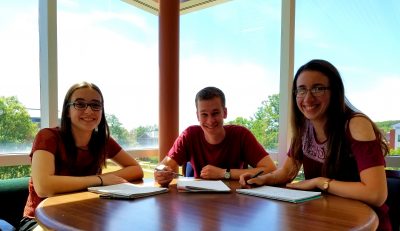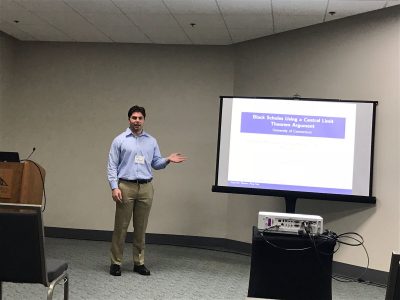Group Members
Stephen Loew, Madeline Hansalik, Aubrey Coffey
Supervisors
Luke Rogers, Antoni Brzoska
Overview
The diamond fractal is a fractal that is obtained in the following manner. Start with a graph with two vertices and an edge and replace the edge with two new vertices connected to our original vertices to obtain a diamond shaped graph. The diamond fractal is defined to be the limiting object after continuing with the edge replacement indefinitely. In the project, the spectrum of magnetic Laplacian operators on graph approximations to the diamond fractal was computed.
Given a level n approximation to the fractal with known magnetic field strengths through cells and holes, it is possible to determine the net magnetic field through the cells and holes of the preceding graph approximations. The spectral similarity relation between the operators on successive graph approximations was worked out, with the corresponding spectral decimation polynomial depending on the magnetic field strengths. A poster and talk on this work was presented at the REU Mini-Symposium at UConn.
Presentation
Magnetic Spectral Decimation
Poster





